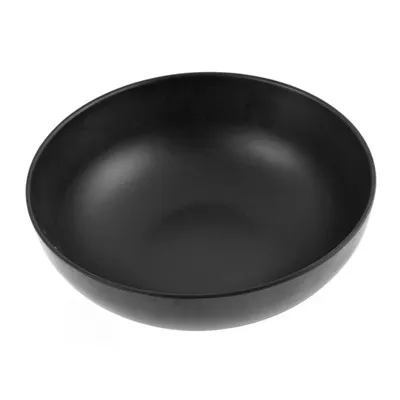-
Cangzhou Yulong Steel Co., Ltd.
-
Phone:
+86 13303177267 -
Email:
admin@ylsteelfittings.com
- English
- Arabic
- Italian
- Spanish
- Portuguese
- German
- kazakh
- Persian
- Greek
- French
- Russian
- Polish
- Thai
- Indonesian
- Vietnamese
- Zulu
- Korean
- Uzbek
- Hindi
- Serbian
- Malay
- Ukrainian
- Gujarati
- Haitian Creole
- hausa
- hawaiian
- Hebrew
- Miao
- Hungarian
- Icelandic
- igbo
- irish
- Japanese
- Javanese
- Kannada
- Khmer
- Rwandese
- Afrikaans
- Albanian
- Amharic
- Armenian
- Azerbaijani
- Basque
- Belarusian
- Bengali
- Bosnian
- Bulgarian
- Catalan
- Cebuano
- China
- China (Taiwan)
- Corsican
- Croatian
- Czech
- Danish
- Esperanto
- Estonian
- Finnish
- Frisian
- Galician
- Georgian
- Kurdish
- Kyrgyz
- Lao
- Latin
- Latvian
- Lithuanian
- Luxembourgish
- Macedonian
- Malgashi
- Malayalam
- Maltese
- Maori
- Marathi
- Mongolian
- Myanmar
- Nepali
- Norwegian
- Norwegian
- Occitan
- Pashto
- Dutch
- Punjabi
- Romanian
- Samoan
- Scottish Gaelic
- Sesotho
- Shona
- Sindhi
- Sinhala
- Slovak
- Slovenian
- Somali
- Sundanese
- Swahili
- Swedish
- Tagalog
- Tajik
- Tamil
- Tatar
- Telugu
- Turkish
- Turkmen
- Urdu
- Uighur
- Welsh
- Bantu
- Yiddish
- Yoruba

Dec . 10, 2024 01:34 Back to list
Techniques and Tools for Efficient Square Tube Bending Processes in Manufacturing Applications
Understanding Square Tube Bending Techniques and Applications
Square tube bending is a crucial manufacturing process that shapes metal tubing into various forms and configurations, ideally suited for a wide range of applications. This technique enables manufacturers to create components that can be used in industries such as construction, automotive, aerospace, and furniture design. The process of bending square tubes must be performed with precision to ensure that the integrity of the material is maintained while achieving the desired shapes.
The Basics of Square Tube Bending
Square tubes are typically made from materials like steel, aluminum, or other alloys, and they come in various sizes and thicknesses. The bending process involves using specialized equipment, such as bending machines and mandrels, to manipulate the tubing without causing damage or compromising its structural integrity. The most common techniques used for square tube bending include
1. Air Bending This method uses a punch and a die, where the tube is placed on the die, and the punch applies force to create the bend. This technique is advantageous for its speed and cost-effectiveness, but it can result in less precise angles compared to other methods.
2. Push Bending In push bending, the tube is pushed into a die with a specialized follower block, allowing for more accurate bends, especially for tighter radii. This method is ideal for creating continuous bends and is commonly used in production settings.
3. Roll Bending This technique involves passing the tubing through three rollers that shape the material as it is pulled through. It is generally used for larger diameters and is suitable for creating large arcs or curves in the tubing.
4. Rotary Draw Bending One of the most controlled and precise methods, rotary draw bending supports the tube throughout the bending process using a mandrel, which helps maintain the shape and prevents deformity. This technique is essential for complex designs and tighter radii.
Factors to Consider in Square Tube Bending
When engaging in square tube bending, several factors must be considered to achieve the best results
- Material Properties Different materials respond differently to bending. Aluminum, for example, is more malleable than steel, making it easier to bend but possibly leading to a higher risk of dents and deformation.
square tube bending

- Bend Radius The bend radius must be carefully chosen based on the project's requirements and the tubing's wall thickness. Smaller bend radii can lead to material failure or wrinkling, while larger radii are often more forgiving.
- Wall Thickness Thicker walls can enhance a structure's strength but may require more powerful machinery and greater force during the bending process
.- Tolerance and Precision Many applications require high precision in the bending process. Tolerances must be strictly monitored to ensure that the finished product meets all specifications and functionality requirements.
Applications of Square Tube Bending
Square tube bending is widely applied across various industries
- Construction Square tubes are often used in the framework of buildings, supporting structures like beams and columns. Bending allows for customized designs that meet specific architectural needs.
- Automotive In the automotive industry, square tube bending is utilized to manufacture frames, chassis components, and brackets, providing strength and durability while minimizing weight.
- Aerospace The aerospace sector uses bent square tubes in the fabrication of aircraft structures, where lightweight yet strong components are essential.
- Furniture Design Modern furniture often incorporates bent square tubing to create aesthetically pleasing and functional pieces, such as tables and chairs.
Conclusion
Square tube bending is a sophisticated process that plays a vital role in modern manufacturing. By employing various bending techniques and being mindful of critical factors, manufacturers can create high-quality, structurally sound components that meet the demands of a diverse range of industries. As technology advances, the methods and equipment used for square tube bending will continue to evolve, offering even greater precision and efficiency to support innovative designs across different sectors. Whether for construction, automotive, or furniture applications, understanding the intricacies of square tube bending is essential for engineers and manufacturers alike.
Latest news
-
ANSI 150P SS304 SO FLANGE
NewsFeb.14,2025
-
ASTM A333GR6 STEEL PIPE
NewsJan.20,2025
-
ANSI B16.5 WELDING NECK FLANGE
NewsJan.15,2026
-
ANSI B16.5 SLIP-ON FLANGE
NewsApr.19,2024
-
SABS 1123 FLANGE
NewsJan.15,2025
-
DIN86044 PLATE FLANGE
NewsApr.19,2024
-
DIN2527 BLIND FLANGE
NewsApr.12,2024
-
JIS B2311 Butt-Welding Fittings LR/SR 45°/90° /180°Seamless/Weld
NewsApr.23,2024











